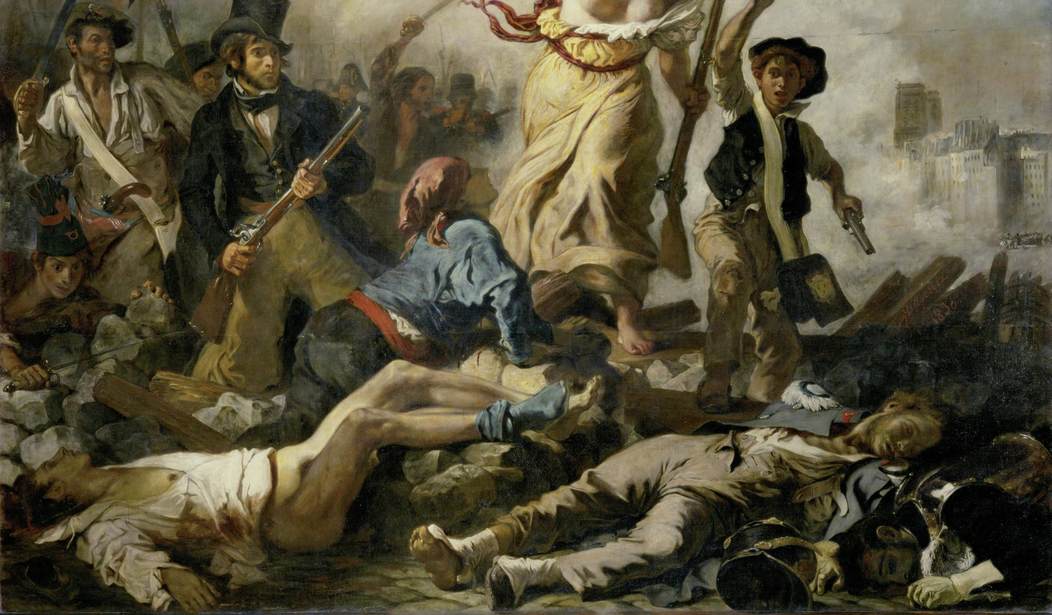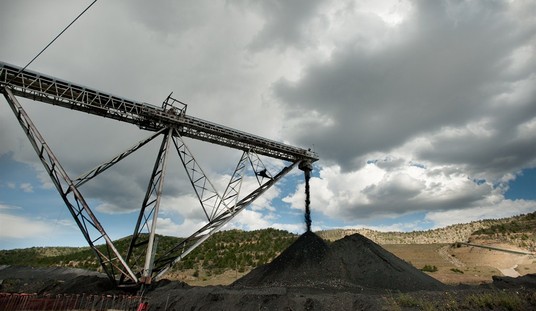For all my French friends, and Americans of French ancestry (like me) — Happy Bastille Day (the French call it “La Fête Nationale” or “Le Quatorze Juillet“)!
July 14, 1789, was a pivotal moment in the early days of the French Revolution. However, it certainly was not a peaceful taking of votes for independence as in Philadelphia on July 4, 1776. On July 14, 1789, a mob in Paris stormed the Bastille — a fortress/prison. The mob feared that they would be attacked by King Louis XVI’s army, so they wanted to grab all the guns and gunpowder they could. The Bastille looked like a good ammo dump to plunder.
The fort also held political prisoners … on that day it held a total of seven. The troops inside eventually surrendered, and the mob then proceeded to murder the officer in charge along with seven other soldiers. And that is the event the French use to celebrate their independence from tyranny.
The story almost sounds similar to our story of the minutemen at Concord Bridge, except we were trying to prevent the British regulars from taking our guns and gunpowder, which we as free people already legally owned. The minutemen also did not murder soldiers who had surrendered; our militia fought British regulars in a running gun-fight all the way back to Boston.
Both the American Revolution (1775-1783) and the French Revolution (1789-1799) happened around the same time period, shared many of the same ideas and goals, and both eventually resulted in free constitutional republics. However, there was most definitely a spiritual component to both events, and these components for a while drove the two nations in two separate directions.
1. The French Revolution was decidedly anti-Christian.
This sounds surprising at first, since France was evangelized by the early church in the first century, and has claimed Catholicism as its main (or only at times) religion for centuries. Yet, by the late 1700s the church was the largest landholder, was free from all taxation, and was seen by many as just as corrupt and extravagant as the royalty that ruled the nation.
Beginning in 1793, the French revolutionary government abolished the Catholic monarchy and confiscated all church property. Cities and streets that had been named after saints were given secular names. Some 30,000 French priests were exiled and hundreds were murdered by mobs. The Christian calendar was replaced by one that measured the years beginning not with the birth of Jesus, but with the first year of the revolution. The seven-day week was also banned and replaced with a ten-day week.
Churches and monasteries across France were closed. The amazing abbey at Cluny (with its enormous library and archives) was burned in 1793. The church had been the largest in the Christian world until St. Peter’s was built in Rome, but it was plundered and its stone was later used for buildings in town. Most of it is still nothing but ruins today.
Statues of saints and crosses were destroyed. Churches were forbidden to ring their bells.
In the French Revolution, the government banned Christian holy days such as Feast Days of Saints, Christmas, and Easter. In the place of these days, government leaders established a “Festival of Liberty” or a “Festival of Reason.” The beautiful, magnificent Cathedral of Notre Dame became known as the “Temple of Reason” for a time, and people had services dedicated to their “Goddess of Reason.”
Every attempt was made to erase any vestige of Christianity.
The famous revolutionary Maximilien Robespierre actually established his own religion — it was called “The Cult of the Supreme Being” (he was a deist). He inaugurated this new religion on June 8, 1794 (Pentecost on the Christian calendar) with a procession and “divine service.” Six weeks later the revolution turned on him, placed him in the same cell where Marie Antoinette had stayed before her execution, and he was sent to the guillotine on July 28, 1794.
The American Revolution, however, was not like that at all. In fact, in America the Christian faith has traditionally been nurtured and protected by society as a whole, and respected by government as part of every person’s natural freedom of conscience (until recently). The First Great Awakening (a national revival led by such men as Jonathan Edwards) had a tremendous impact upon colonial America.
While no one was talking about rebellion against the king of England during the First Great Awakening, the revival did in fact lay much of the spiritual groundwork for our War for Independence later. The evangelists preached against elitism, they focused on each individual’s responsibility before a holy God, and they preached that God had made us all equal before the cross and therefore we would all be equal before each other (it would take a hundred or two hundred years before that last statement would become reality in the South especially).
The Great Awakening was the first event that traversed the entire 13 colonies and brought them all together in a shared experience. From this moment on, the colonists started thinking of themselves more as Americans, and not so much as Englishmen.
In America, Christians were part of the “revolution.” Of the 56 signers of the Declaration of Independence, only two were confirmed deists (Thomas Jefferson and Benjamin Franklin). Two were Roman Catholic, and the other 52 were all members in good standing in orthodox Protestant churches. They never saw themselves as anything else but Christians who were taking a stand for freedom against tyranny.
They saw their Christian faith as an ally, not as a hindrance. In fact, Sam Adams stated on July 4, 1776: “We have this day restored the Sovereign to whom all men ought to be obedient. He reigns in heaven, and from the rising of the sun to the setting, let His kingdom come.” (He certainly was no deist.) One of the signers of the Declaration was a clergyman himself, the Reverend John Witherspoon (ordained Presbyterian minister and president of the College of New Jersey at the time).
The Continental Army was so full of ordained clergy in its ranks that the British would refer to those men as “the Black-Robed Regiment.”
One of my favorite stories is that of Reverend John Peter Muhlenberg. He was an ordained minister in the Lutheran church. While in church one Sunday, after preaching his sermon, he pulled off his black clerical robe to reveal the uniform of a colonel in the 8th Virginia Infantry Regiment. He told all the men there that it was their duty to sign up and fight. He walked out of church, the men signed up, and he personally led them onto the field of battle.
2. The French Revolution fell into a Reign of Terror.
Some historians place the Reign of Terror with the first introduction of the guillotine in 1789. Others select years such as 1792 or 1793. Most are convinced it ended with the execution of a chief ringleader, Robespierre. Between 1793 and 1794 some 16,594 death sentences were handed out … most without a trial (certainly not any kind of trial we would call fair today).
It was Robespierre himself who justified mass executions without trial. He believed that a government executing all suspected “enemies of the state” was actually being quite virtuous: “Terror is nothing more than speedy severe and inflexible justice; it is thus an emanation of virtue.”
Well, he certainly got a taste of his own “virtue” when they led him to the guillotine in 1794. What an awful fate.
The chaos of the Revolution descended into anarchy until finally a young Corsican officer named Napoleon Bonaparte brought “order” to the situation … and later became the Emperor of France.
The American Revolution, thank God, did not fall into such chaos. Some historians even question whether we should call it a “revolution” at all since we were not trying to overthrow the British monarchy. In fact, we were simply trying to regain the rightful liberties we once had before a tyrannical government had illegally taken away. Such a conflict could certainly be called a civil war (since it was between two English speaking groups with a shared culture).
The Americans had been practicing self-government for over 160 years, so their approach was measured and reasonable. When warfare broke out, it was seen purely as a defensive measure (Concord Bridge) and so fighting back was justified, legally and morally.
Remember, all of America’s founding documents at this point (the Mayflower Compact, the Fundamental Orders of Connecticut, the Declaration of Independence) mentioned God as their source for leading a balanced and ordered life, and not for violently overthrowing government. Yet, they also believed that a government which oppressed their natural rights was out of bounds, and needed to be “corrected.”
https://www.youtube.com/watch?v=uNOTozVp_i4
I have to believe that this belief in the God to whom they believed they were all accountable (see the last line of the Declaration) by and large held Americans back from the kind of mob rule, anarchy, and terror against innocent civilians that infected the French Revolution.
3. The French Revolution produced decades of instability.
Napoleon seized power but was finally deposed after the Battle of Waterloo (1815). Following Napoleon’s exile to St. Helena, France went through periods of monarchy and republic (and even a brief experiment with communism with the Paris Commune of 1871). Throughout the 19th century, the influence of the church continued to wane considerably.
Fortunately, France established a working, free republic from the latter part of the 19th century until its surrender to Nazi Germany in 1940. After its liberation by the Allies, France once again established a free constitutional republic, thank God.
In America, thankfully, we have not had the same chaos of alternating monarchical governments and constitutional republics. Of course, we did have that one tragic episode of the Civil War, in which some 700,000 Americans were slaughtered. But aside from that, in our nation we have kept the same government, with essentially the same Constitution since 1787.
That kind of stability comes from a largely shared belief for the past two hundred years that because of man’s corrupt nature, the power of government is best shared within a division of powers in a constitutional republic. Hopefully, we will continue to teach that to future generations, so that we will never dissolve into the chaos and anarchy that France suffered through for so long, before she finally emerged free.
Vive la France!
God Bless America!








Join the conversation as a VIP Member